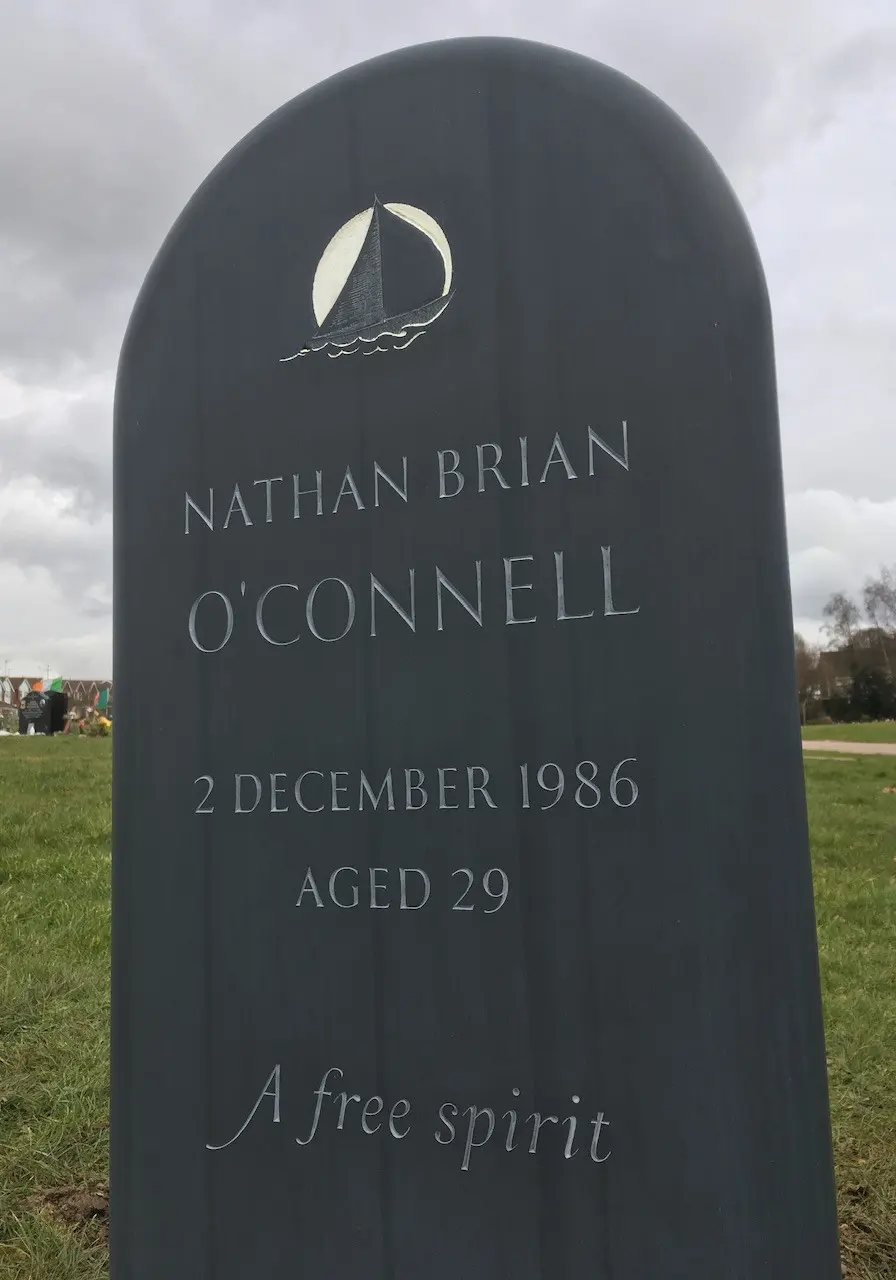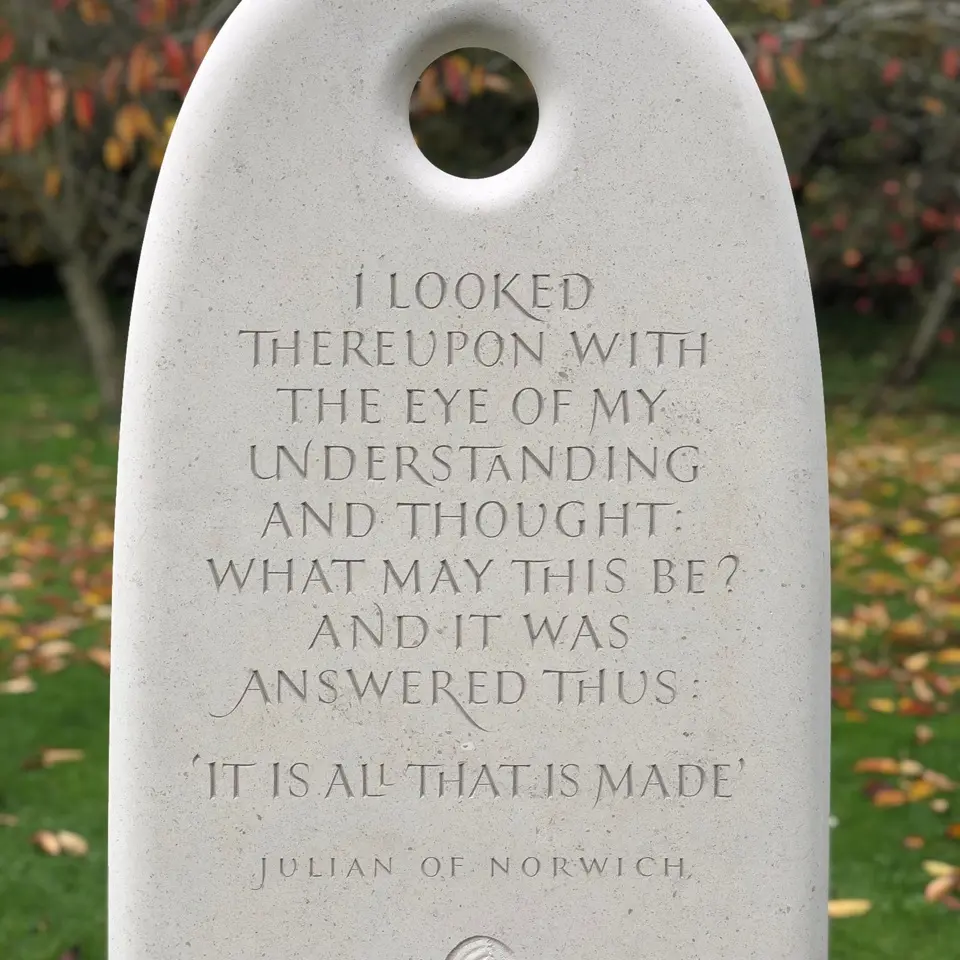By using this website, you agree to our privacy policy
×Contents
How Long Does Grave Settling Take?
The process of laying a loved one to rest is a journey. It's a path marked by both sorrow and reverence, where every detail matters.
One such detail is the settling of the grave. This natural occurrence is often overlooked, yet it plays a crucial role in the creation and placement of a headstone.
But what exactly is grave settling? And how long does it take for a grave to settle?
These are questions that many people grapple with, especially when planning a burial or selecting a monument. Understanding grave settling is essential to ensuring a lasting tribute to the deceased.
In this article, we delve into the intricacies of grave settling. We explore its timeline, the factors that influence it, and its significance in the creation of a headstone.
Our aim is to provide a comprehensive guide that demystifies grave settling, offering clarity and peace of mind during a challenging time.

Understanding Grave Settling
Grave settling is the process by which the soil of a burial site naturally compacts over time. This happens as the soil gradually fills the spaces left by the disruption of the earth during burial.
Understanding this process is vital in the creation of a monument. A headstone must be placed only once the ground is stable enough to support its weight.
The significance of grave settling extends beyond practicality. It represents a period of transition, both for the earth and the grieving family. Patience during this time respects the natural order and ensures that a lasting tribute is properly established.
Waiting for a grave to settle can be emotionally challenging. Families may feel a sense of incompleteness until a permanent headstone is placed. This waiting period allows for reflection and acceptance, providing space for grief to transform.
Key aspects of waiting for grave settling include:
Allowing for natural ground compaction
Preventing premature misalignment of the headstone
Ensuring the stability and longevity of the monument
By understanding grave settling, families are better prepared for the timeline involved in memorializing their loved ones. It emphasises the importance of timing and expertise in the headstone creation process.

The Grave Settling Timeline
Grave settling is a gradual process, typically taking about 6 to 12 months to complete. This timeframe allows the soil to naturally compact, ensuring the ground becomes stable enough to support a headstone. However, always allow at least 12 months before erecting a headstone.
The process of settling involves the earth shifting and compressing into the void created by the burial. Over time, the weight of rainfall, atmospheric conditions, and the natural density of the soil contribute to this gradual compaction.
Understanding the timeline helps families plan the appropriate time for monument placement. Rushing this important step can lead to misaligned or unstable headstones, which could require costly adjustments later on.
Each burial site will have its unique settling characteristics. By acknowledging these individual differences, families can better anticipate when the ground will be ready for a lasting tribute to their loved one. Knowing this timeline helps manage expectations and provides peace of mind during the grieving period.
Factors Influencing Grave Settling
Several factors can influence the time it takes for a grave to settle fully. Soil type plays a significant role in determining settling speed. Sandy soil tends to settle faster than clay or loam, which may hold moisture and compact more slowly.
Climate also affects the grave settling process. Regions with heavy rainfall or frequent freeze-thaw cycles can experience faster soil compaction. Conversely, dry climates may slow settling, as less moisture leads to reduced soil movement.
The specific burial practices used can impact grave settling time as well. Graves with deep burial plots or those that include large caskets might cause the ground to take longer to stabilize due to increased soil disturbance.
Seasonal changes further complicate the settling process. During winter, frozen ground can delay compaction, while summer's heat and dry conditions slow settling. Spring rains often accelerate the process due to the added weight and moisture.
In summary, various environmental and practical factors interconnect to influence how long a grave takes to settle. These elements include:
Soil type and its composition
Regional climate and weather patterns
Burial depth and size
Seasonal changes and their effects
Understanding these factors can help in planning the timeline for monument installation and ensuring a stable resting place.
The Role of Grave Liners and Vaults
Grave liners and vaults can significantly impact the settling process. These structures are used to encase the coffin and help maintain the integrity of the burial site. By providing a stable framework, they reduce the amount of soil that collapses into the grave after burial.
The presence of liners or vaults typically slows the natural settling of the soil. Since these structures support the earth around them, they minimize the compaction process. This stability allows for a more even surface over time, making the site safer for future monument installation.
Using grave liners or vaults also has other benefits. They protect the casket from the weight of the soil and groundwater intrusion. This protection can extend the time frame in which the surrounding earth settles, which may prolong the timeline for placing a permanent monument


Temporary Markers and Their Use
During the grave settling period, temporary markers serve a vital role. These markers provide a way to identify and honor the resting place without risking damage. They stand as placeholders until the ground is ready for a permanent headstone.
Temporary markers are typically lightweight and easy to adjust. They can be relocated or leveled as the grave naturally settles. This flexibility ensures that the grave site remains identified and respected throughout the settling phase. I tend to suggest using a simple wooden marker with the name and date of death. Having a temporary marker takes the pressure off you to install a headstone in a hurry and also helps locate the grave at a later date. Sometimes I find myself making a headstone for a grave which has been unmarked for over ten years and it can be a challenge to find the location.
Using temporary markers also offers peace of mind to grieving families. Knowing that the site is marked, even temporarily, provides emotional comfort. It allows for continued visits and remembrances while awaiting the installation of a more lasting monument.
The Right Time for Headstone Placement
Choosing the right moment for headstone placement is crucial. Placing a headstone too early can lead to various issues. Early placement might result in misalignment or damage due to ongoing settling.
It is wise to wait for the recommended settling period to elapse. Typically, this period ranges between six to twelve months, depending on the soil and climate conditions. Allowing adequate time for settling helps ensure a stable foundation for the headstone.
Consulting with a professional in monument creation provides valuable guidance on timing. Skilled artisans understand the nuances of grave settling. They can advise on when to place a permanent headstone, ensuring longevity and alignment.
My most important advice is to allow at least 12 months before erecting a headstone, and to take your time.
My most important advice is to allow at least 12 months before erecting a headstone, rather than the standard 6-12 months often quoted. We also encourage you to wait this long in any case as it is important to allow yourself long enough to know what inscription you want on the stone, and if you choose a headstone when you are still feeling very emotional, likely, you might later regret the words chosen. I have written a long article on taking your time to choose a gravestone.


Hand-Crafted Headstones for Unsettled Graves
Creating headstones for unsettled graves requires careful consideration. Artisans must design with the future in mind. They tailor each piece to accommodate potential soil shifts.
The design process is intricate and thoughtful. Artisans use their expertise to select materials and styles that adapt well. This ensures durability despite initial soil movements.
Installation techniques are also pivotal. Professionals employ methods that provide flexibility and stability. This combination of craftsmanship and foresight ensures the monument endures beautifully. Each headstone reflects a deep respect for the individual’s memory, even in the early stages of grave settling.
We advise that 6 months is not long enough for a grave to settle and is too soon to erect a headstone
Here at Stoneletters we never install a headstone for at least 12 months following the burial. We have found that 6 months is not long enough and will inevitably result in some movement of the headstone later on. Even after 12 months, we find there is sometimes some movement. Because we only use a monolith fixing (rather than the often-used pin and base fixings) however, we can quite easily rectify any leaning of the stone at a later date, although there will be a cost involved in doing this. If on the other hand,d a headstone is installed using a pin fixing it is much harder to re-align a shifting stone.
Preserving the Integrity of the Grave Site
After a grave has settled, continued care is crucial. Maintenance helps preserve both the headstone and the surrounding area. This dedication keeps the site looking dignified and respectful.
Regular inspections are part of the process. Professionals examine the headstone and its alignment. They ensure it remains secure and visually appealing as time progresses.
Any necessary adjustments are made with great skill and care. We find that in practice we tend to be called out to "right" a leaning headstone perhaps once every three years. Often shifting of the ground is unavoidable and the headstone will start to lean. You don't need to worry if this happens, as it is easily rectified because of the fixing method we use. This proactive approach guarantees that the site remains a fitting tribute to the person it honours. Maintaining integrity honours both the past and the continuing memory of the departed.
Conclusion: The Importance of Patience and Expertise
Understanding grave settling is crucial for honoring loved ones properly. It requires time and patience for a grave to stabilize fully. Choosing the right time for headstone placement ensures lasting integrity and beauty.
Skilled artisans play an essential role in this process. Their expertise guides families through decisions, ensuring both respect and craftsmanship. The personal touch of hand-crafted headstones provides a lasting tribute to those we cherish.
As we navigate the journey of grief and remembrance, patience and artistry offer solace. A well-timed and expertly crafted monument serves as a testament to a life well-lived.

Fergus Wessel
Designer and letter-carver
Fergus created Stoneletters Studio in 2003, after training at the Kindersley Workshop. He is a member of the prestigious Master Carver's Association.


Request our free booklet today
- © 2025 Stoneletters
- Legal notice
- Privacy policy
- Disclaimer








